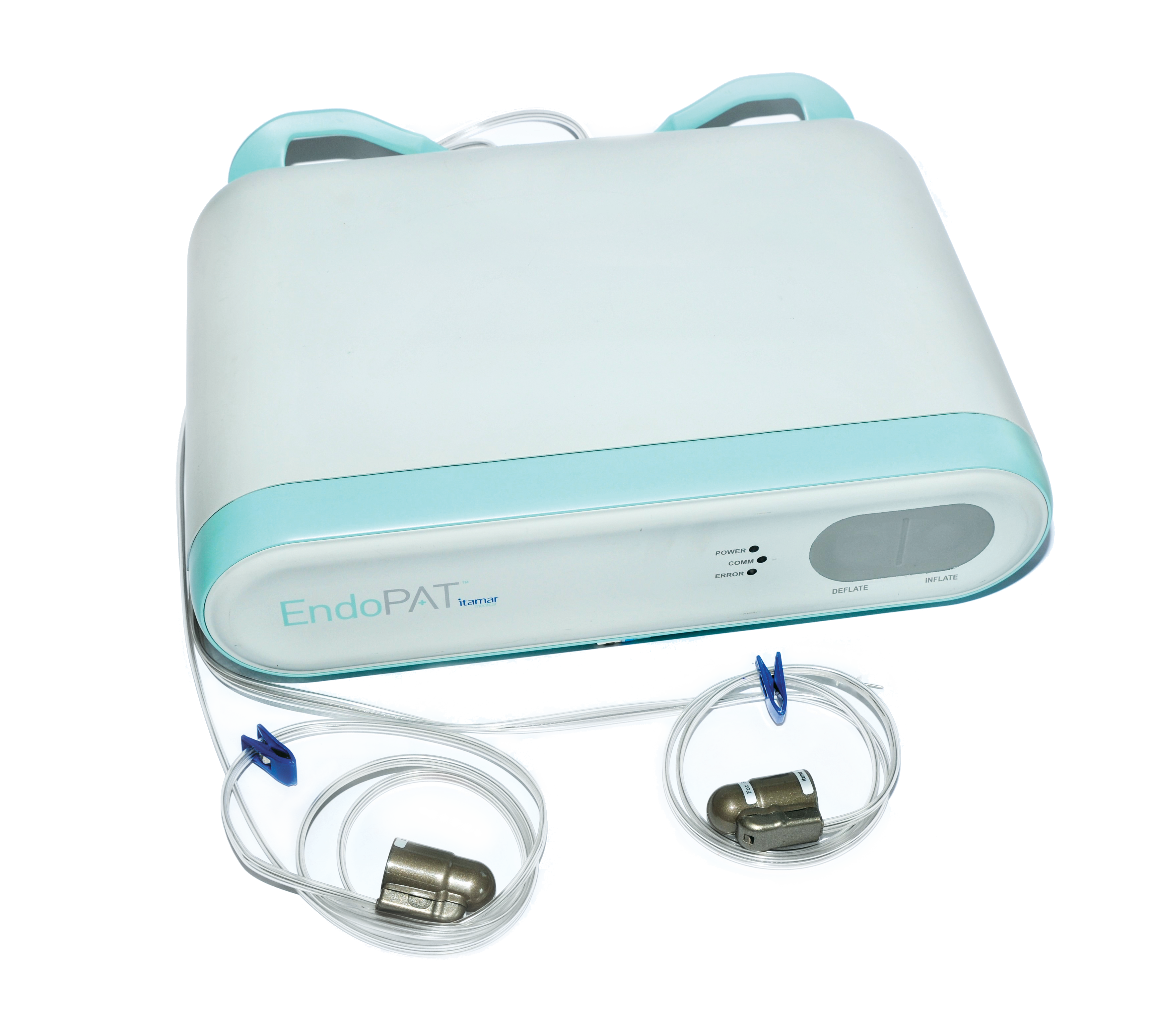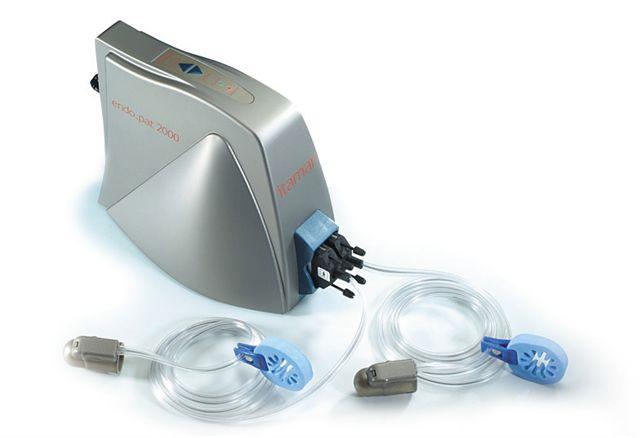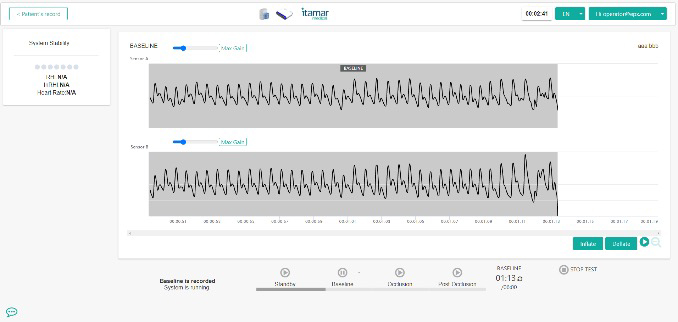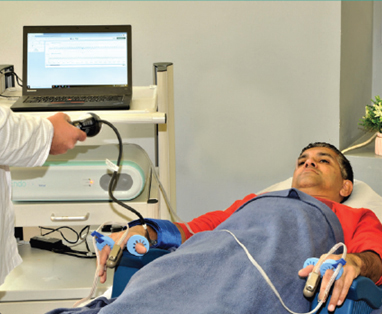
PAT®️ technology is a non-invasive window to the cardiovascular system and autonomic nervous system. Peripheral Arterial Tone (PAT®️) signal is a proprietary technology used for non-invasively measuring arterial tone changes in peripheral arterial beds.
The PAT®️ signal is measured from the fingertip by recording finger arterial pulsatile volume changes.
Based on PAT®️ technology, the non-invasive EndoPAT system comprises a measurement apparatus that supports a pair of modified plethysmographic
sensors.
The unique feature of the PAT®️ bio-sensors is that they impart a uniform sub-diastolic pressure field to the distal two-thirds of the fingers including their tips.







